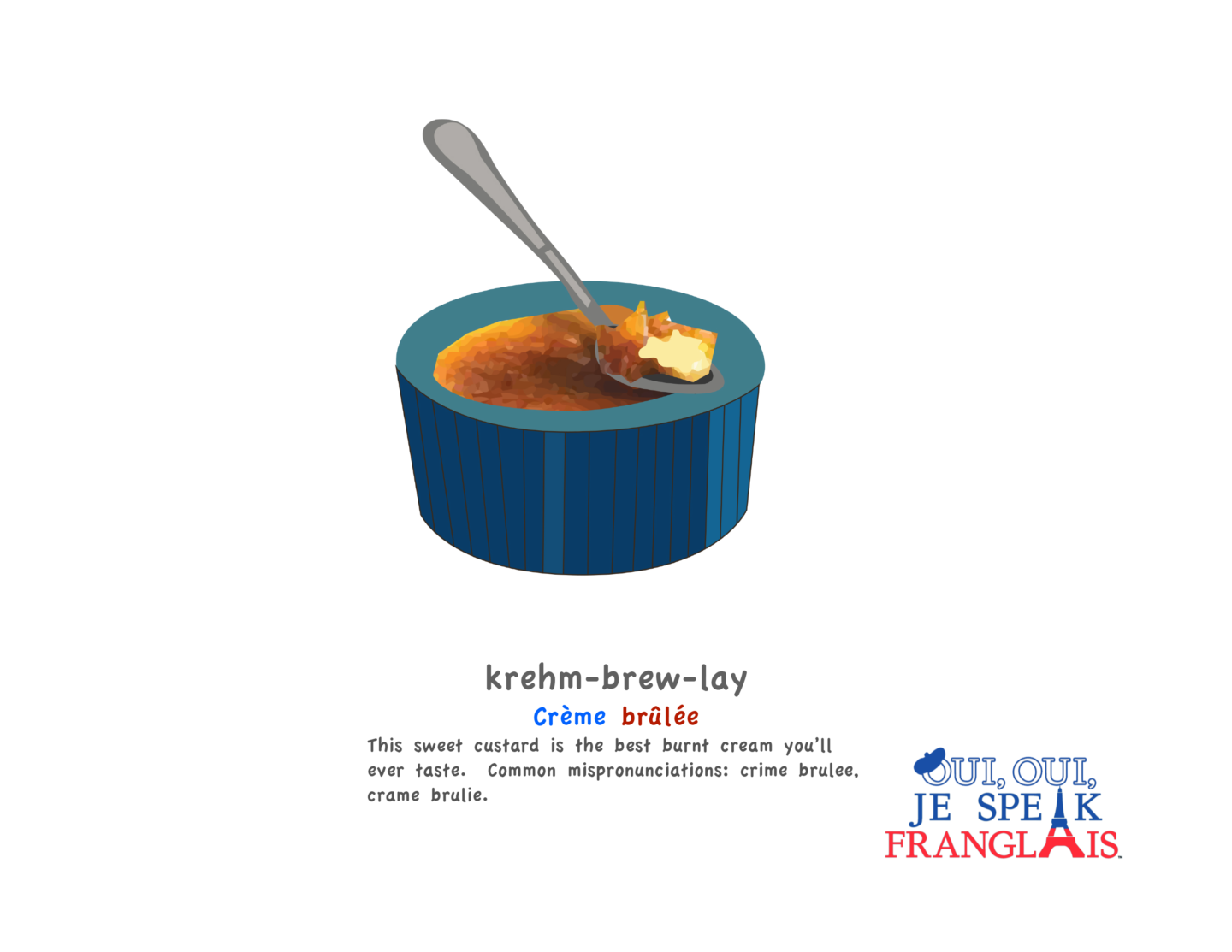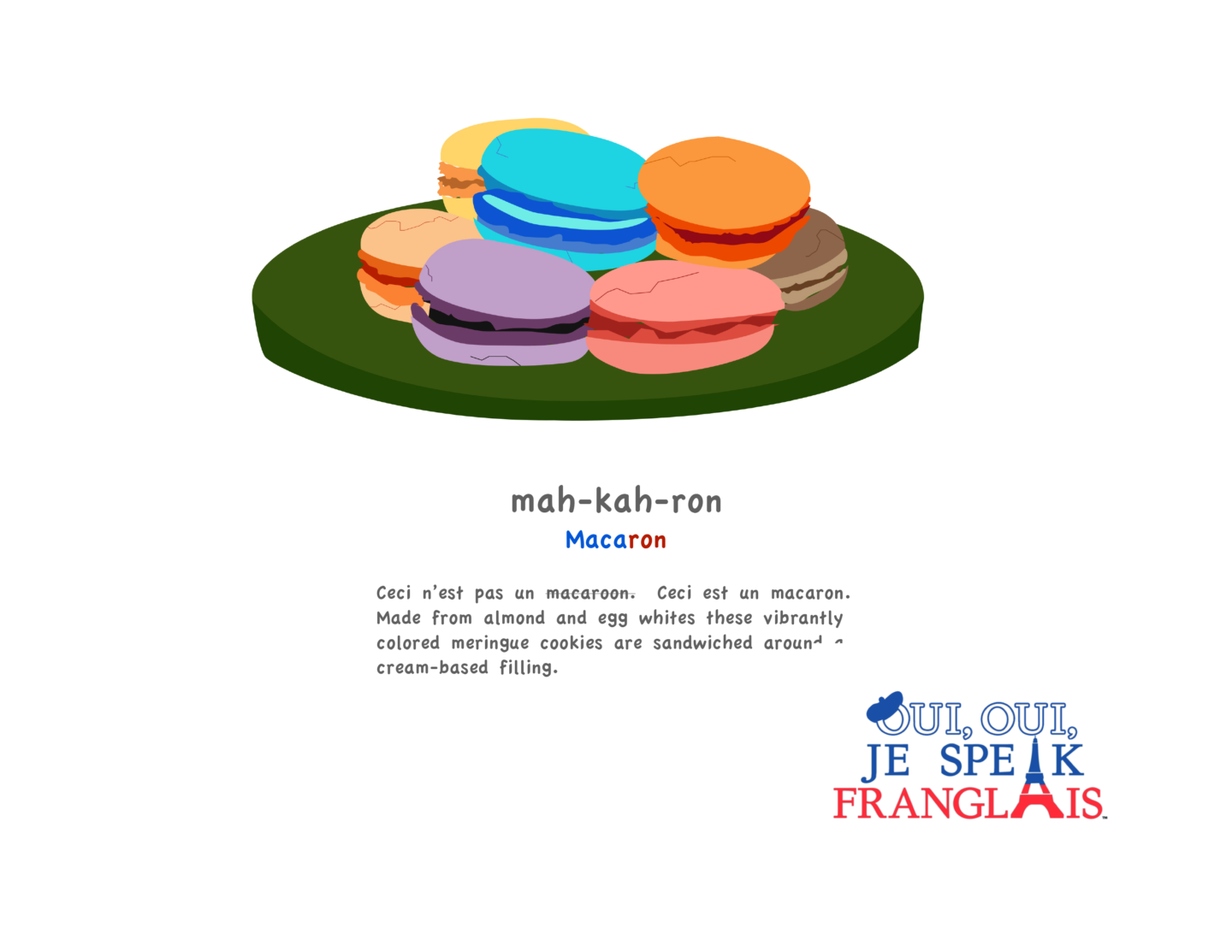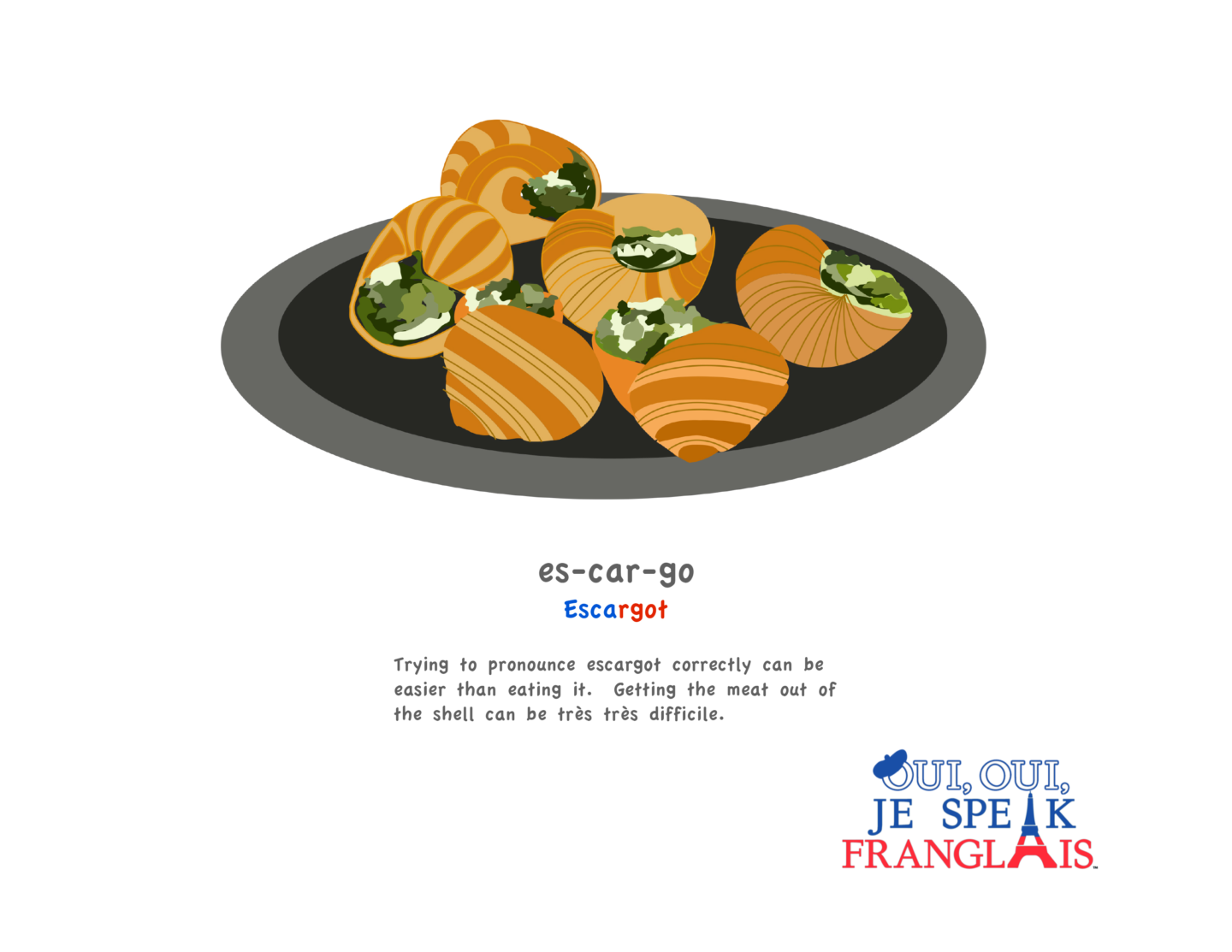






Oui, Oui , if you are Francophone then you know celebrating the holidays is all about feasting and feasting some more.
This year, celebrating of les fetes will seem different due to obvious reasons but where there is life there is hope. So during this celebratory season, our holiday feature is Eric and Yetunde Fraudeau of Cookn’ With Class.
OOJSF: Tell us about the company Cookn’ With Class and how are you different from the other cooking schools?

CWC: Cook’n With Class is a small French cooking school which was started by French chef, Eric Fraudeau in 2007. The idea was to offer a taste of France and French culture through its gastronomy to visiting tourists (and locals), in English. From the very beginning we chose to keep class sizes small so that people could enjoy a hands-on and convivial experience. What I think makes us different is that every detail of the detail is handled by chefs & trained cooks, from the recipe creation to class setup. Being small also allows us to adapt and adjust with the times and the tastes of our followers and students. We have been able to maintain a very loyal & devoted client-base who have been especially present during this very difficult year.
OOJSF: How do you guys celebrate Le Réveillon de Noël and Noël? And how will Covid change that?
CWC: It depends on where we are but always with family. Be it our small family of 3 or with our extended family, in France, the US or the UK. Unfortunately, our families are not as close by as we would like. While some are indeed in France they are still quite a distance away. This year with COVID, we may actually see more of our extended family, I think it will be through video-conferencing. This form of communication seems to have entered our lives in ways we never thought imaginable.
OOJSF: What are your traditions during les fetes?
CWC: Cooking! A festive meal is always part of the plan even if it were just the two or three of us and dressing up as if we were going off to a fine dining restaurant. Good wine and always with music playing in the background. We exchange presents but not till Christmas day in our house. Our son who (perhaps for his last year), still believes in Santa, leaves out a plate of cookies, a glass of milk and a clementine pour papa Noël.
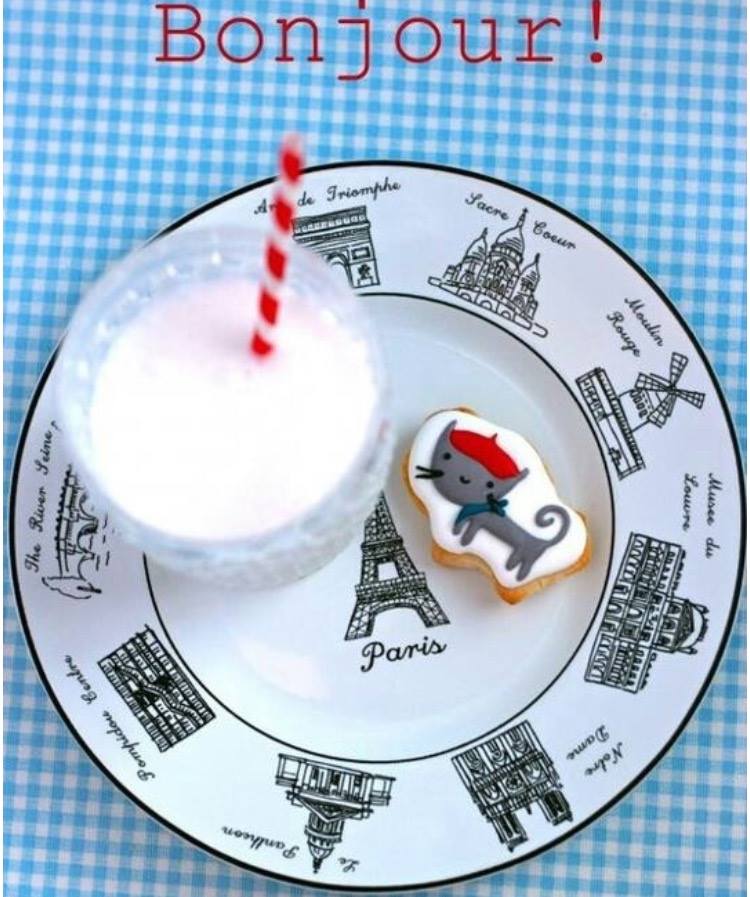
OOJSF: What are some etiquette during the holiday celebrations?
CWC: (Eric) The old custom in France for Christmas is that the family gathers at the end of the afternoon. There is an aperitif with small things to eat that are simple and little work. Depending on the region of France you may have olives, radish, all with “Blettes en Provences”, bread and cheese.
We put the log in the chimney (hence the origin of the Christmas Log) and we go to mass. When we come back from the mass, the fireplace is warm and we can make New Year’s Eve until late in the night, (reveillon = to wake up) dinner is rich and copious. The oysters, the foie gras, the stuffed turkey and the log, or as in Provence the thirteen desserts.
At midnight, the youngest of the house puts little Jesus in the manger and the children go to bed. The parents then take out the champagne. At dawn, Papa Noel has left the presents under the tree and the children open the presents…
On the 25th at noon, the young parents meet at the home of the in-laws and we alternate every year.
Chef Eric’s wine pairings:
Capon: A red wine from Burgundy (Mercurey) or from Val de Loire, a cabernet Franc, strong in red fruit flavor.
Yule log: If it contains chocolate I will have a Glass of Port Wine
I prefer tea with dessert as they are already sweet. But you know champagne is also a great choice for the Yule log.
Joyeuses Fêtes (Happy Holidays)
If you love French cuisine sign up for updates and if you want to REGISTER to learn how to cook online OR REGISTER in person with Cookn’ With Class.
If you need a French inspired dish, you can try the stuffed roasted capon as a part of a plat prinicipal and a bûche de Noël for dessert!
RECETTES:
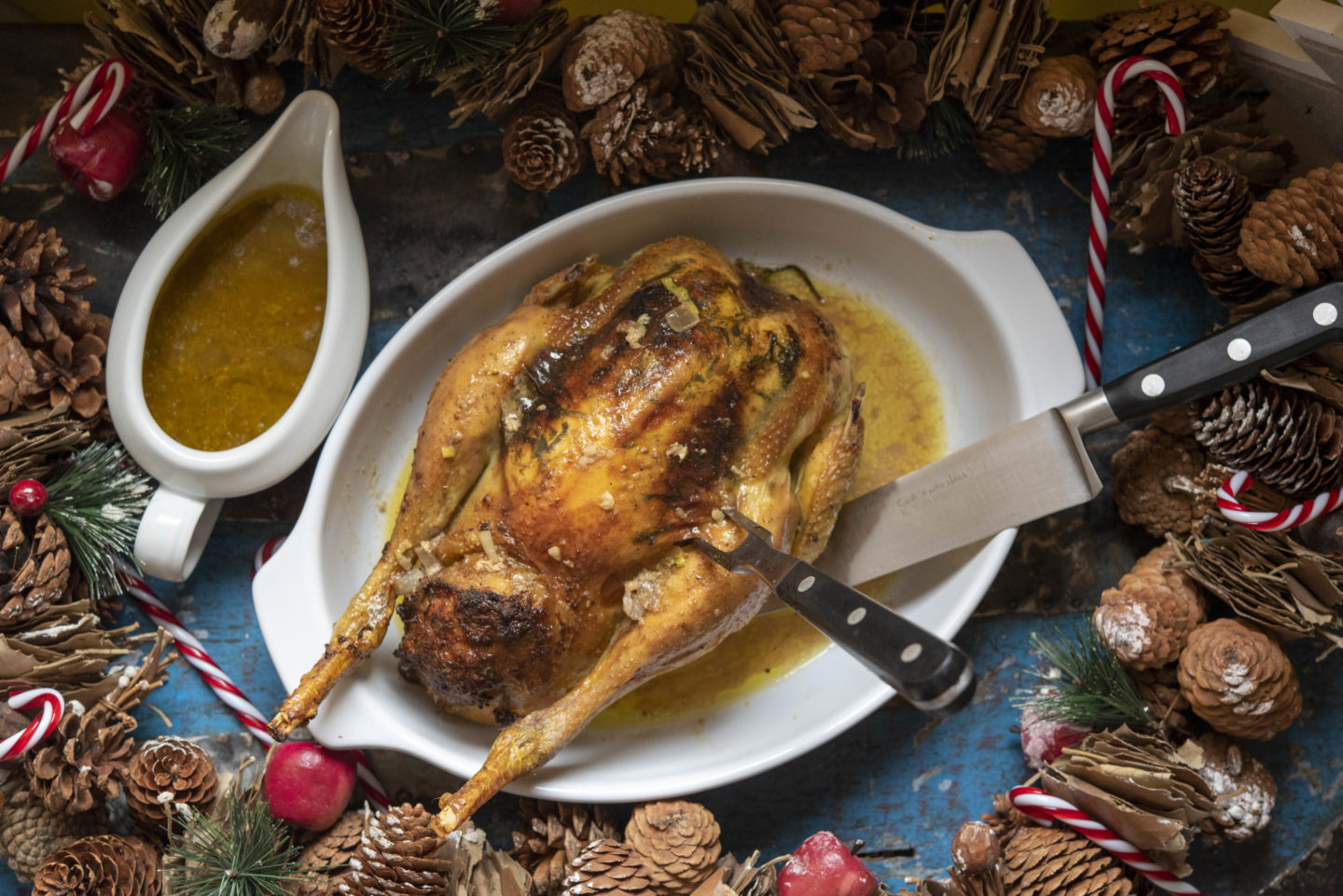
Ingredients:
Capon ( or large chicken) 1 2.5 kg (5lbs)
Carrot 1 (cut into pieces)
Onion 1 (cut into wedges)
Snipped chives (scallions can be used as a
substitute)
Zest (finely grated) & Juice of Lemon
Whole Lemon (thinly sliced)
10 Grams (1/3 cup)
All-Purpose Flour 20 Grams (1/8 cup) Capon (or Chicken) Stock 950 Milliliters (4 cups) FOR THE STUFFING
Ground pork 120 Grams (4 oz) Ground Veal 120 Grams (4 oz) Chestnut 1 can (100g or 3 to 4 oz) Scallions 2 (chooped) Garlic Clove 1 (chopped) Egg 1
Sandwich Bread 2 slices
Milk 1/3 Cups
Salt and Pepper
Preparation mode:
A capon is a male chicken castrated when young to improve the quality of its flesh. The meat is moist and tender. In France, during the holiday season, it often replaces the turkey. For a more traditional Thanksgiving, however, you can use a turkey, changing the proportions accordingly.
1. Preheat the oven to 350°F, (180°C). In a food processor, combine 1/4 cup of the chives with the butter, the lemon zest, and juice, salt, and pepper, and pulse until smooth. Transfer lemon chive butter to a small bowl and stir in the flour. Set aside.
2. Beginning at the neck, gently separate the Capon skin from the breast and legs. Season the Capon cavity with salt. Rub half of the lemon-chive butter from the food processor under the skin, spreading it over the breasts and the thighs.
3. Mix in a large mixing bowl all the ingredients for the stuffing, stuff the bird with it.
4. Set the capon on a rack in a large roasting pan and scatter the carrot, onion, and lemon slices in the pan, add 345 mL. / 1 1/2 cups of water. Rub the remaining chive-butter from the food processor all over the outside of the bird. Roast on the bottom rack of the oven for 1/2 to 2 hours, adding 1 cup of water to the roasting pan and tenting the capon with foil halfway through roasting,
5. The capon is done when an instant-read thermometer inserted deep in the thigh registers 170°F ( 75°C ). Uncover the Capon and transfer to a carving board, let it rest for 20 minutes
6. Meanwhile, strain the pan juices into a large measuring cup. Spoon off the fat and discard it. In a large saucepan, boil the capon stock until it is reduced to 185 mL. / 1 1/4 cup, about 15 minutes.
7. Add the pan juice and bring to a simmer. Whisk in the reserved butter-flour mixture and simmer over moderate heat, whisking constantly. Cook until thickened, about 4 minutes, and season the gravy. Add the remaining chives. Carve the capon and serve with a spoon of stuffing.
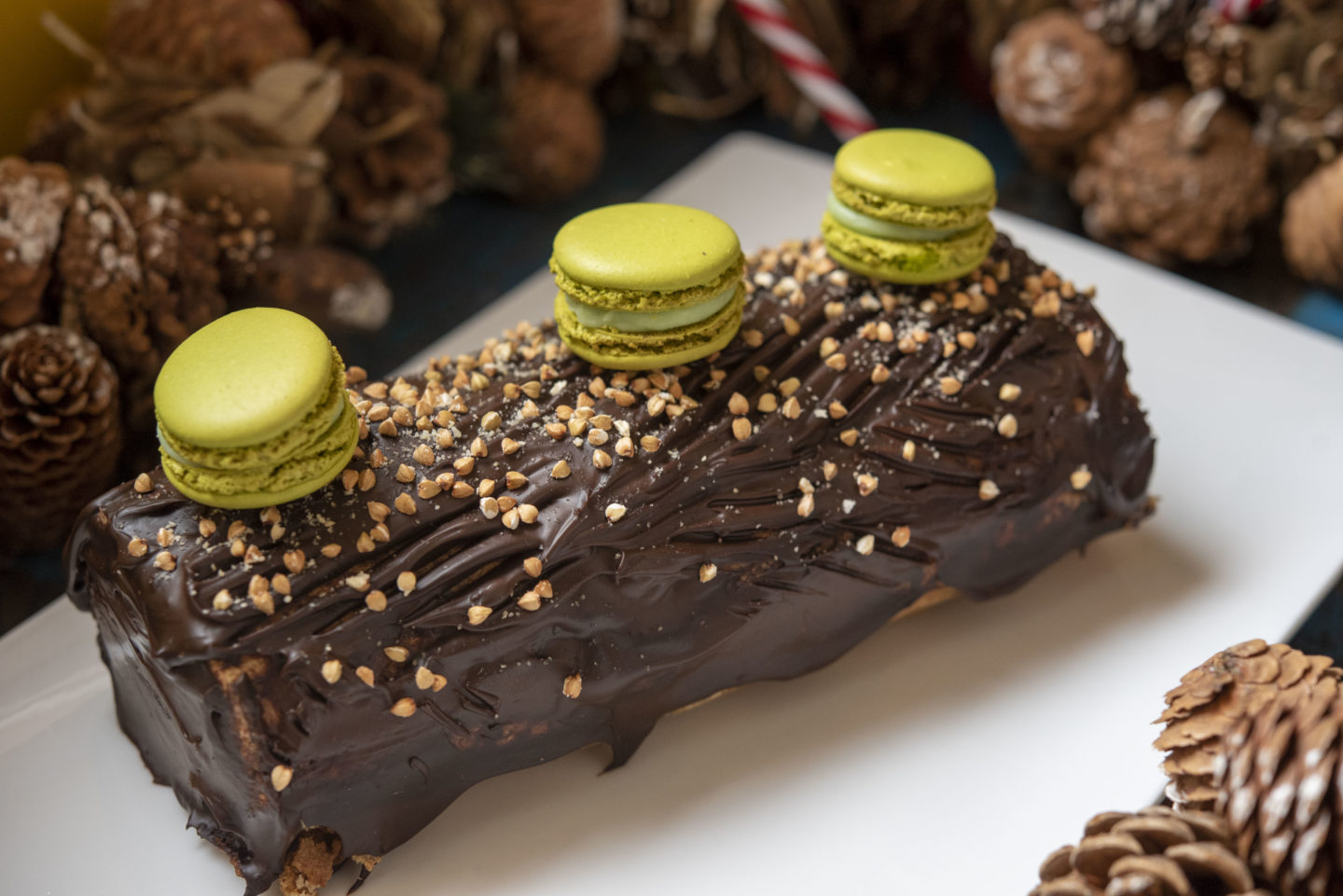
Ingredients:
FOR THE MILK
CHOCOLATE GANACHE
Whipping Cream 360 Grams (1.5 cups or 14 oz)
Milk Chocolate 120 Grams (4.3 oz)
Hazelnut Spread 28 Grams (1 oz)
FOR THE GENOISE CAKE
Eggs 3
Sugar 180 Grams (6.5 oz)
All-Purpose Flour (Plain Flour)
90 Grams (3.1 oz)
Baking Powder 1 Teaspoons
Almond Meal (Almond Flour/Almond Powder)
Whipping Cream (Heavy Cream)
30 Grams (1 oz) 1 Tablespoons
Butter 100 Grams (3.5 oz) Buckwheat Flour 65 Grams (2.2 oz) Salt 1 pinch
FOR THE DARK
CHOCOLATE GANACHE
Whipping Cream (Heavy Cream)
100 Grams (1/2 cup or 3.2 oz)
Dark Chocolate 70% 85 Grams (3 oz) Honey 1 Tablespoons
Butter 1 Tablespoons
Fleur de Sel or Maldon Salt 1 pinch
FOR THE LEMON GELEE
Lemon 2
Sugar 15 Grams (0.5 oz) Agar-Agar 2 Grams (1 pinch) FOR THE DECORATION
Buckwheat Seeds (optional)
60 Grams (2 oz)
Dark Chocolate 90 Grams (3 oz)
Preparation mode:
1. Make the whipped milk chocolate ganache with hazelnut spread: Chopped the milk chocolate in small chunks.
2. In a large mixing bowl, add the hazelnut spread and the chopped chocolate milk, melt over a double boiler for just a few seconds to start the melting process.
3. Separate the cream into 2 parts. One part you keep cold on the counter and the other part you boil. Pour half of the boiled cream on the chocolate, mix well with a wooden spoon, add the other half of the boiled cream. Mix well again. Then add the cold cream and mix well. Keep in the fridge until needed.
4. Make the Genoise: Pre-heat your oven to 150ºC 320ºF
Make brown butter by cooking the butter until it has a hazelnut color. Keep aside.
5. Torrefy the almond meal in the oven at 150ºC 320ºF for 15 minutes. Keep aside. You can now turn the oven up to 165ºC or 310ºF so it is ready for the cake.
6. In a large mixing bowl or with your stand-up mixer, whisk eggs and sugar until it foams.
7. Mix, flours, baking powder, and the torrefied ground almond together.
8. When the eggs have doubled in volume, fold in the mix of flours delicately using a plastic spatula; Add the brown butter.
9. Spread on a baking pan with parchment paper. Bake 10 to 12 minutes. When cooked, put a sheet of parchment paper on top and flip the genoise so it stays moist and cools down nicely between the two sheets of parchment paper (without the baking pan).
10. Make the Lemon Gelee: Get the juice of the lemon, pass through a sieve or a colander, boil the juice for 2 minutes with the sugar and agar-agar. Cool down on a plate in the fridge covered with cling film.
11. Make the Chocolate Ganache: Chop the chocolate and boil the cream. Pour the cream over the chocolate in 3 parts, mix well with a wooden spoon. Add butter and salt. Mix well but don’t whip. Keep at room temperature.
12. When cold, whip the lemon gelee so it becomes a paste; reserve in the fridge
13. Torrefy the buckwheat seeds for 15 minutes in the oven at 150ºC or 310ºF Reserve at room temperature.
Assemble your Yule Log
1. Remove the parchment paper from the genoise.
2. Spread the lemon paste on the genoise.
3. Whisk the milk chocolate ganache for 1 minute so it gets foamy, spread it on the genoise, but keep 2.5 cm or 1 inch clean on the edges.
4. Spread some buckwheat seeds, but keep one third for decoration.
5. Roll the genoise. You can use parchment paper or a clean kitchen rag to assist you. Cover it with a clean kitchen rag.
6. Keep in the fridge for 2 hours.
7. Remove the kitchen rag spread the dark chocolate ganache, add the buckwheat seeds, add the dark chocolate previously chopped.
C’est déjà 10 ans ou is it 11 years already?
Well, actually Oui, Oui ‘s Facebook page was launched 10 years ago and Facebook is a great reminder of how far we have come with a community of more than 160, 000.

However, I had launched Oui, Oui, Je Speak Franglais in 2009 after I had applied to le programme d’assistants de langue and ended up in Lille. I literally remember pacing around trying to come up with names, that were witty, fun yet easy to role of one’s tongue et voilà, the name Oui, Oui, Je Speak Franglais came to mind.

Oui, Oui, started off as a campaign because I wanted to inspire my students in Lille, France to speak English because learning a target language has its challenges. Before then, my path was clear just as any university graduate pursuing their life’s dream in tv production and marketing. After two years of working in those sectors back to back I lost my job and that was a catalyst that taught me about life and change. Moreover , deeply understanding that change is the only thing that’s constant.

Now, Oui, Oui, is more than a campaign but a bicultural and bilingual lifestyle company. I have curated many programs, initiatives, met people from all walks of life and shared countless memes on social media… I am looking forward to do more!
So simply put … whatever you want to accomplish in la vie, you can do it whilst afraid; however, you must be consistent and always do it with conviction. If you do get tired on your journey, learn to rest and don’t quit.

Merci mille fois for being a part of The Oui, Oui, Je Speak Franglais Community!
And remember each day is the perfect jour to vivre, être, parler franglais!
p.s: What’s your favorite thing about being bilingual?
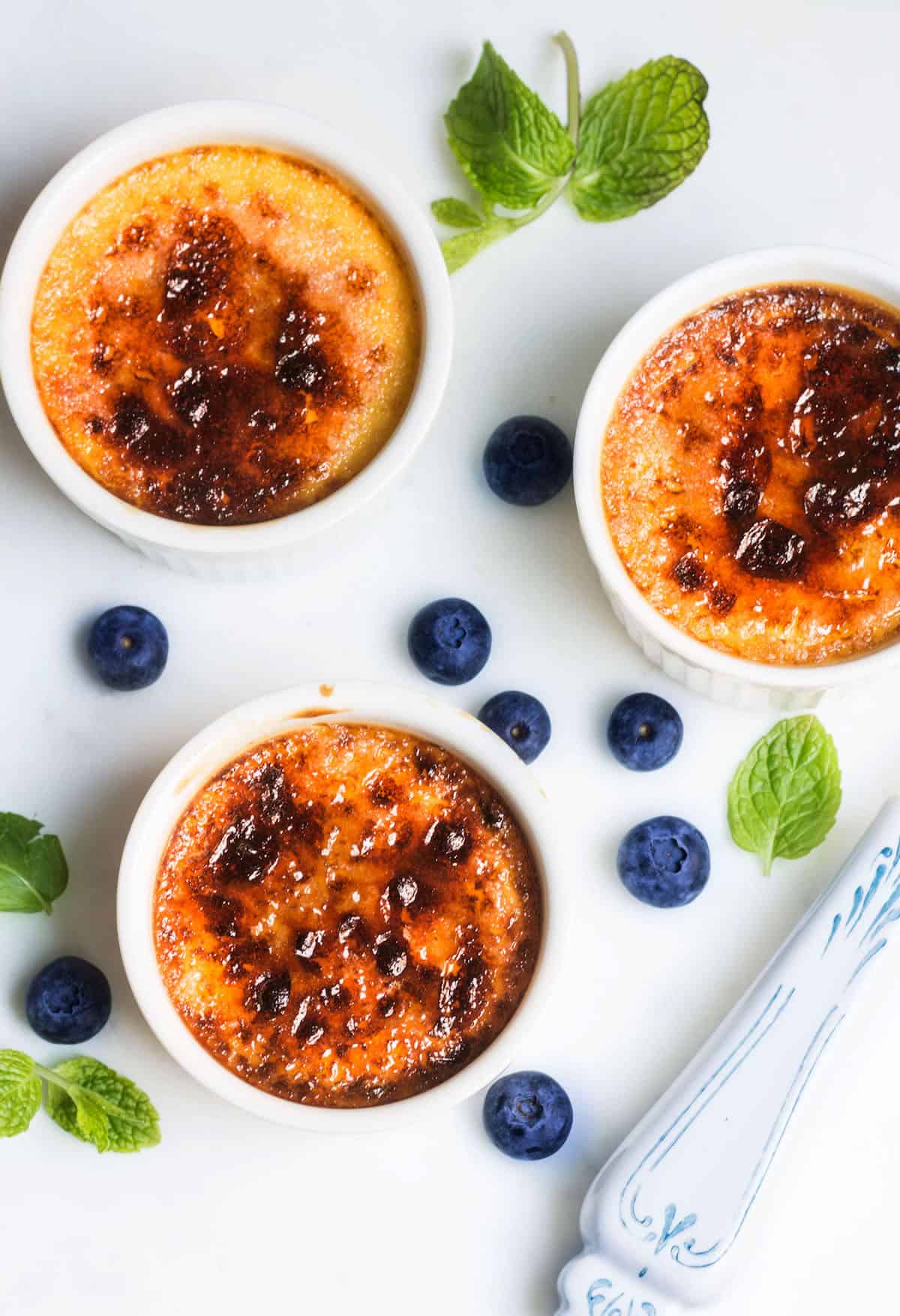
Crème brûlée, which literally means burnt cream, is a dessert of custard–topped with caramelized sugar. My first time ever ordering this dessert was about 15 years. It was at a bistro in le quartier de la Bastille and ever since then, Oui, Oui — you guessed it, crème brûlée is usually my first choice when ordering dessert in a resto. I mean , pourquoi pas? This creamy custard leaves me craving for more.
Thanks to Mon Petit Four’s, Beeta Hashempour, you too can recreate this decadent recette for yourself or guests. Bon app!
Yield: 5 Prep Time: 25 minutes Cook Time: 1 hour 10 minutes Total Time: 1 hour 35 minutes
Creamy vanilla custard baked until set, then topped with a caramelized sugar topping.
If you decide to make this recipe for 2 people, divide the recipe in half and use 8 oz. ramekins.
5 Servings
Amount Per Serving: Calories: 423
And if it so happens that you need help pronouncing crème brûlée, we’ve got you covered!
